Attending college in the US as an international student can be challenging for multiple reasons — cost being a huge blocker. Unfortunately, international students don’t qualify for federal financial aid, and can’t submit the FAFSA to determine eligibility for grants and loans. But international students can still fill out the ISFAA to qualify for institutional financial aid.
What is the ISFAA?
ISFAA stands for International Student Financial Aid Application. It’s a form that schools use to determine need-based eligibility for institutional aid.
Because it’s on an individual institution basis, there’s no singular, standardized ISFAA. Some colleges create their own application, others use services such as the College Scholarship Service (CSS) profile provided through CollegeBoard.
The CSS profile allows students and colleges to submit and view ISFAA information electronically. But some countries don’t allow access to the CSS, so you would need to fill out a paper ISFAA and return it to your college.
How do I complete the ISFAA?
If your college utilizes the CSS profile, create an account and add your information on the CollegeBoard website. There’s a $25 fee for completing your CSS profile and sending the information to your college. If you want to send the information to multiple colleges, it costs an additional $16 for each school.
If your school doesn’t utilize the CSS, or you can’t access it, fill out a paper ISFAA and directly submit it to your college. For the paper version, remember to fill out the ISFAA for the correct academic year.
11 steps to submit the ISFAA
The process will probably look slightly different for each college you’re considering. But in general, schools will want information relating to your and your family’s financial status. Follow these steps to ensure a smooth application.
Step 1: Determine if your school uses CSS or a paper ISFAA
This is an important first step and will dictate the rest of the process. If you can use CSS, create your account. Otherwise, print out the paper form ISFAA.
Step 2: Gather your information
Regardless of how your information is processed, you want to have all your paperwork together before getting started. Make sure to gather your and your parents’ financial information.
Step 3: Fill out Section A: Student’s information
This section will include information like your name, date of birth, address and marital status.
Step 4: Fill out Section B: Parents’ information
Similar information will be requested for your parents.
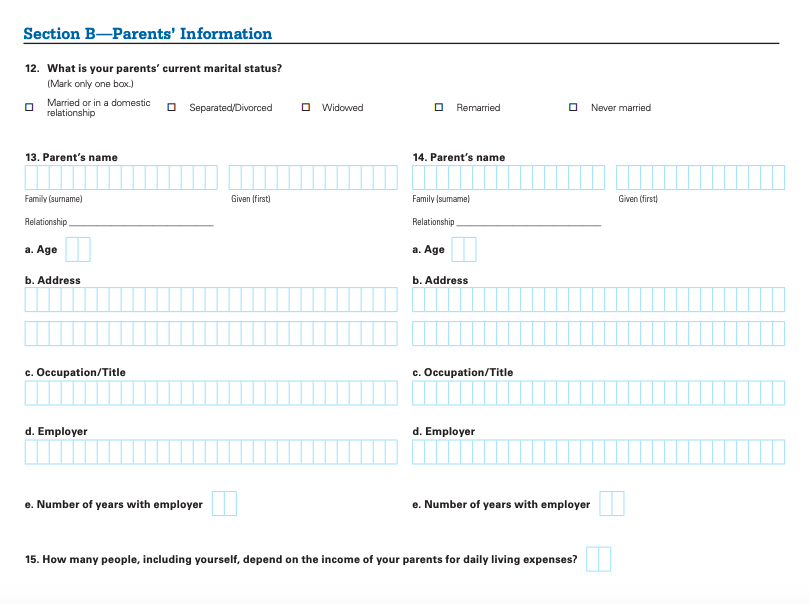
Step 5: Fill out Section C: Financial information
For this section you’ll share your household financial information. You’ll likely need tax documents and possibly letters of recommendation for anyone in your family who is employed.
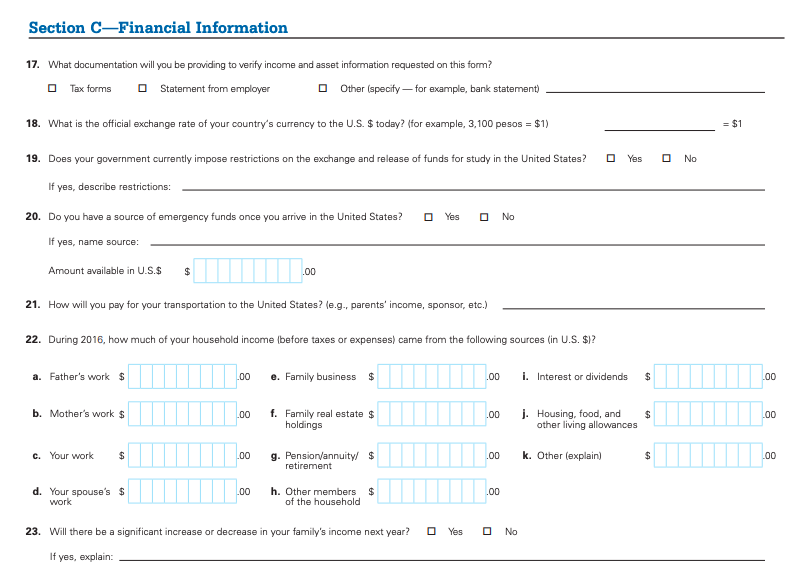
Step 6: Fill out Section D: Asset information
The asset section will apply to property, businesses, land and investments that you or your family have.
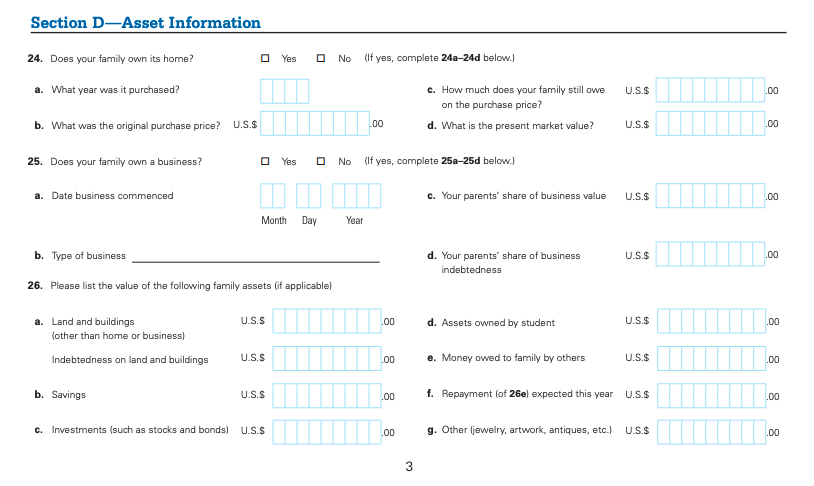
Step 7: Fill out Section E: Expenses
List any expenses such as rent, utilities, medical expenses or auto loans.
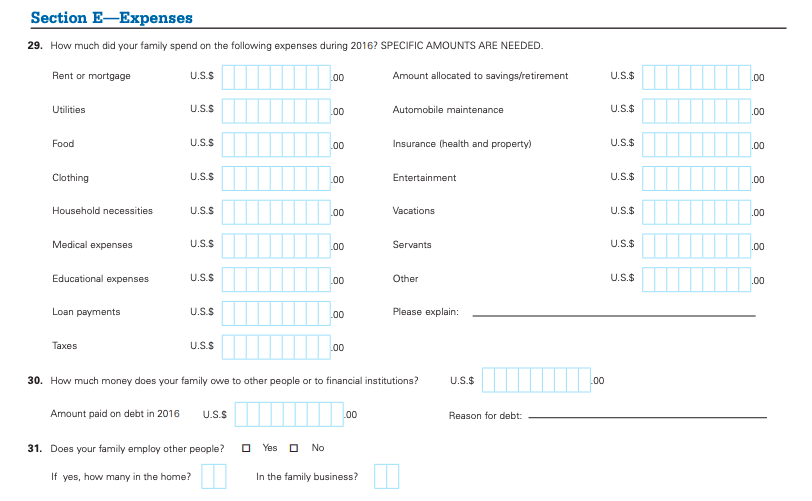
Step 8: Fill out Section F: Expected support for educational expenses
This section summarizes your income, assets and any support you might be receiving from federal agencies or foundations.
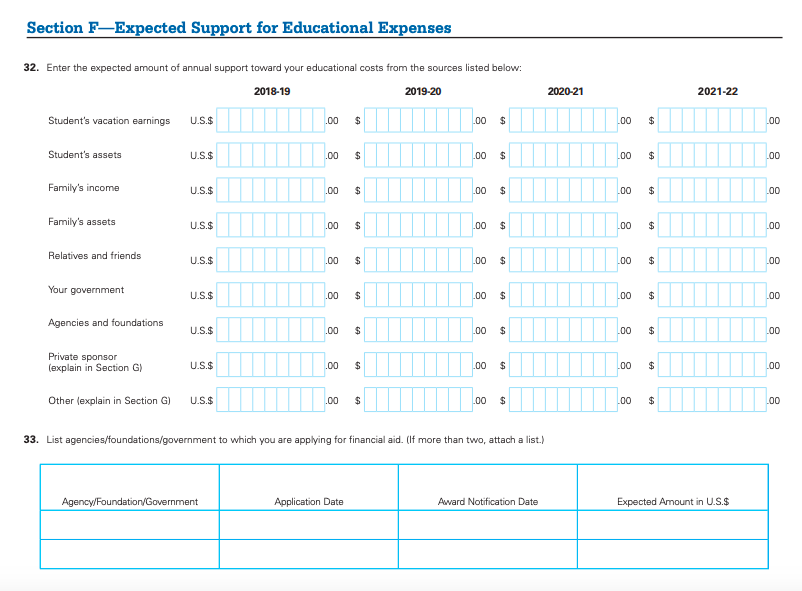
Step 9: Fill out Section G: Explanation or special circumstances
You might not have anything to add to this section, but try to outline any circumstances your college should know about.

Step 10: Sign Section H: Certification and authorization
This section requires yours and your parent’s signature along with the date.

Step 11: Send the form to your school
If you’re filling out the CSS the information will be sent electronically to your school. If you’re filling out the paper ISFAA, you must mail it in.
What happens after I submit my ISFAA?
Check your CSS dashboard for updates once your profile information is submitted. Because this isn’t a standardized application, processing time can vary from school to school.
You may need to follow up with the financial aid office at your college once you submit your application, especially if you use the paper form.
When should I submit my ISFAA?
A good general guideline is to follow the submission timeframe for the FAFSA, which becomes available each year on October 1st. You should try to complete the ISFAA around the same time, although deadlines can vary depending on the college.
Bottom line
The CSS profile and ISFAA are important resources for international students looking for financial aid. For additional information on potential funding, read our guide to student loans for international students.
Frequently asked questions
How do I know if my school accepts the CSS profile or ISFAA?
The easiest place to start is by reaching out to the financial aid office at your school. They can point you in the right direction.
How much can I receive in financial aid?
Because the ISFAA is used to determine eligibility for institution-based aid, the amount available can widely vary. If you know that you’ll need financial aid, research how much funding the school or schools that you’re interested in allocates to aid for international students. Some schools make it clear when financial aid is only available to US citizens.
How do I qualify for a CSS fee waiver?
Unfortunately, international students aren’t eligible for fee waivers provided through CollegeBoard. However, some colleges offer fee waivers to domestic and international students. Reach out to your school’s financial aid office
More guides on Finder
-
$415 billion in student loan debt may not get paid
22% of borrowers say they won’t be able to afford student loan repayments when they resume.
-
Student loans for DACA recipients
Compare 5 lenders you might qualify with — even without a cosigner.
-
How much does it cost to attend college?
It all depends on your financial aid package.
-
Flight school loans and how to pay for flight school
Turn your dream of becoming a pilot into a reality.
-
FAFSA statistics
Undergraduates apply for more federal aid than any other group — but more might be eligible.
-
It could cost as much as $4,688 to apply to your dream school
What fees you can expect to pay and how to avoid spending thousands.
-
7 ways you can lose your student loan eligibility
What’s required to remain eligible for student loans and what you can do if you lose eligibility.
-
Student loans to overtake mortgages in 25 years
By 2042, student loan debt could grow to be larger than mortgage debt in the United States.
-
Best student loan refinancing options
Want to pay less interest and fewer fees on your student loans? See how top refinancing lenders compare.
-
Student loan debt statistics
Find out how much Americans borrow for higher education, how student debt balances have changed over the years and who’s borrowing the most.
Ask a Question